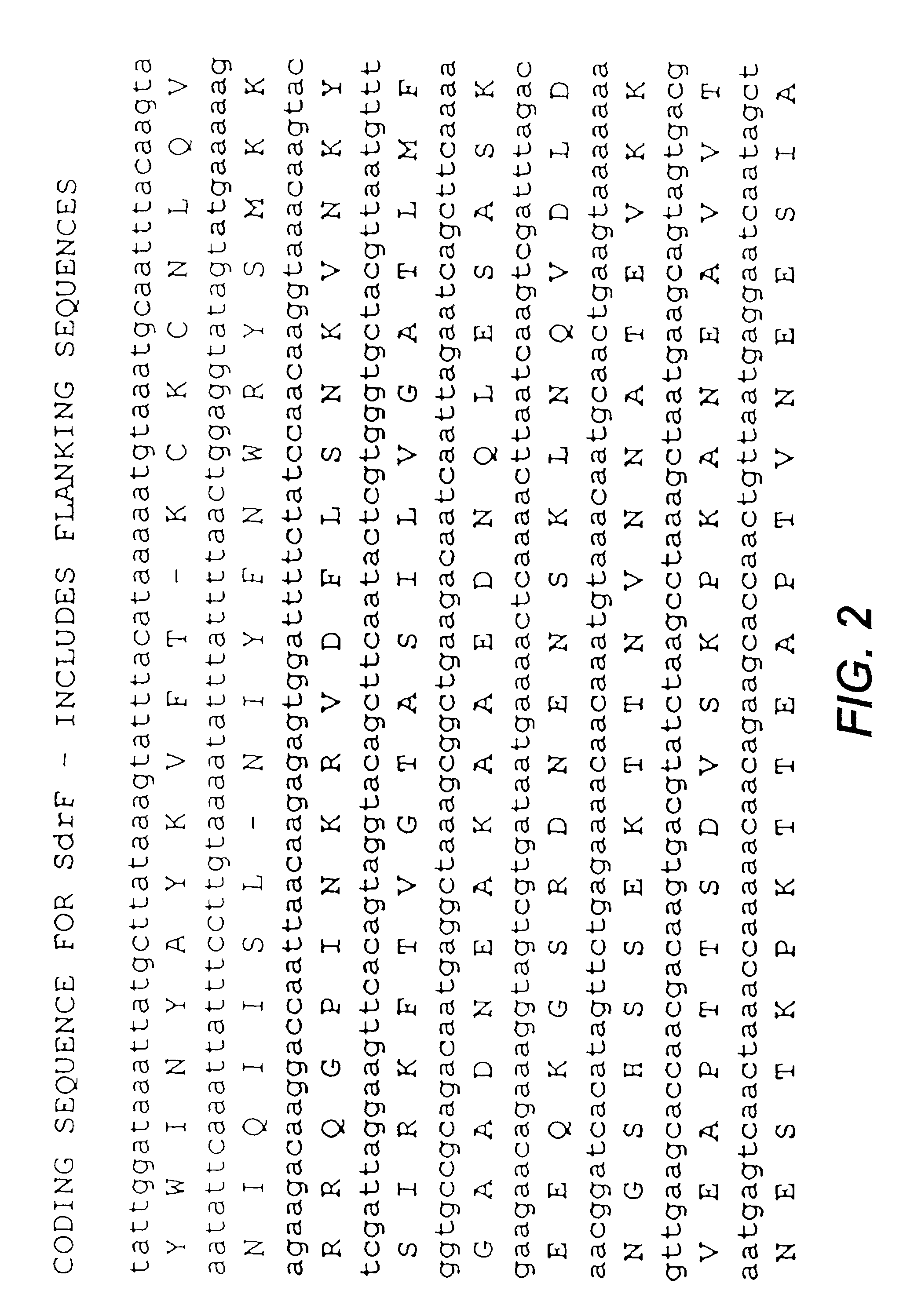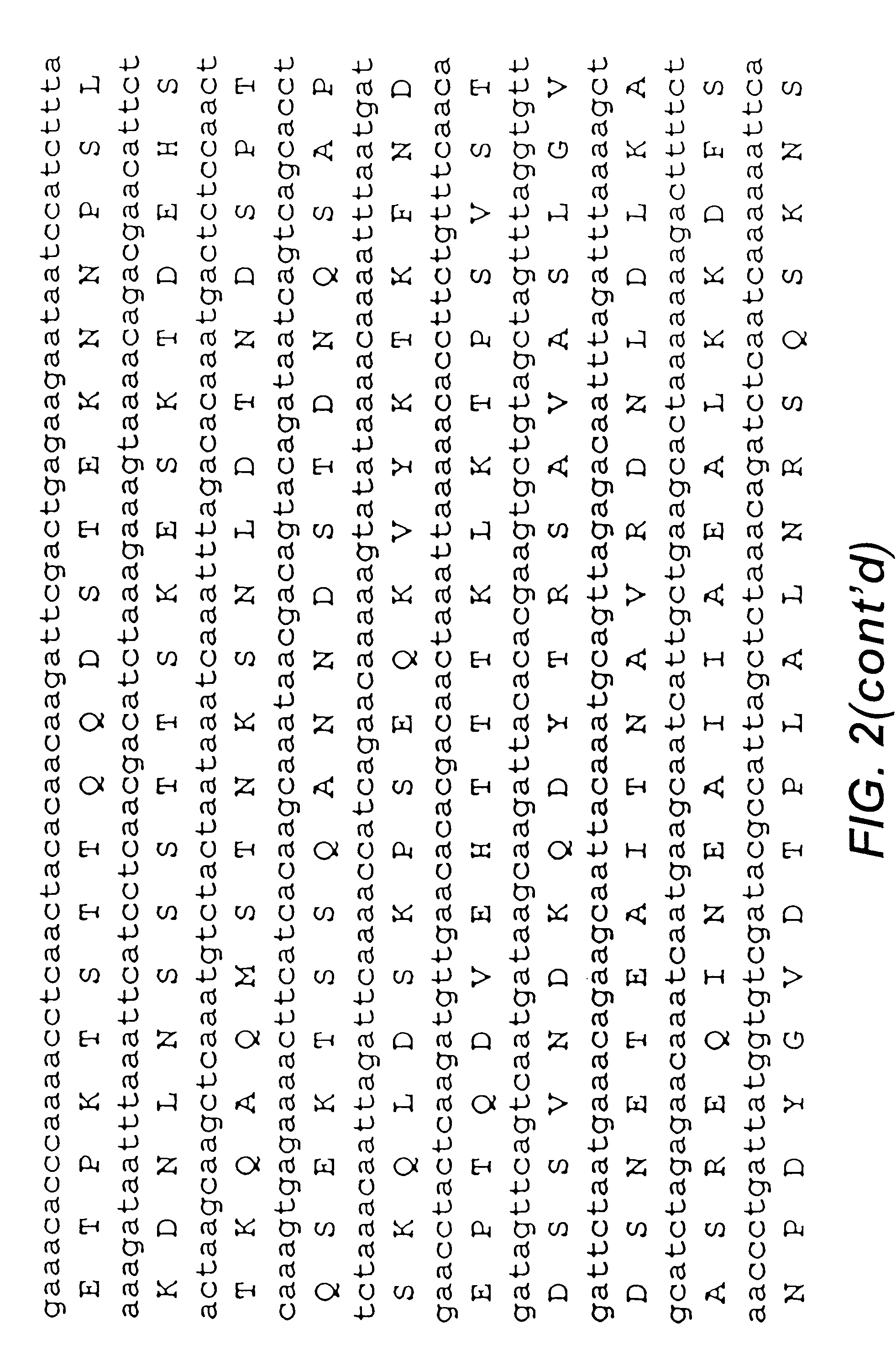Proteins and polypeptides from coagulase-negative staphylococci
a staphylococci, coagulase-negative technology, applied in the field of microbiology and molecular biology, can solve the problems of septicemia, osteomyelitis, more serious invasive infections,
- Summary
- Abstract
- Description
- Claims
- Application Information
AI Technical Summary
Benefits of technology
Problems solved by technology
Method used
Image
Examples
example 1
Identification of Sdr Encoding Genes in Coagulase Negative Staphylococci
[0168]Five genes (clfA, clfB, sdrC, sdrD, sdrE) have been identified in Staphylococcus aureus that contain the dipeptide aspartic acid and serine (DS), encoded by an 18 bp repeat motif GAY TCN GAY TCN GAY AGY (SEQ ID NO: 15), where Y=pyrimidines and N=any base. This family of proteins has been named the Sdr's for serine-aspartic acid repeat. All of the 5 S. aureus sdr genes encode proteins that contain features that characterize them as surface associated proteins in Gram positive bacteria; namely at the N-terminus there is a secretory signal and at the C-terminus there are (i) several positive charged residues that serve as a stop signal for protein secretion, (ii) a hydrophobic transmembrane region and (iii) a wall-spanning region with an LPXTG motif that is required for accurate sorting and correct protein orientation in the cell wall. To identify novel genes that encode cell surface proteins in coagulase neg...
example 2
Studies of the Sdr Genes in Coagulase Negative Staphylococci, and Identification, Isolation, Sequencing and Expression of SdrF, SdrG and SdrH
Overview
[0178]Staphylococcus epidermidis strains can express three different cell surface-associated proteins that contain serine-aspartate dipeptide repeats. Proteins SdrF and SdrG are similar in sequence and structural organization to the Sdr proteins of S. aureus. They comprise 625 and 548 residue unique region As at their N termini, respectively, followed by a variable number of 110-119 residue region B repeats, an SD repeat region, and C-terminal LPXTG motifs and hydrophobic domains characteristic of surface proteins that are covalently anchored to peptidoglycan. In contrast, SdrH has a short 60 residue region A at the N terminus, followed by a SD repeat region, a unique 277 residue region C, and a C-terminal hydrophobic domain. SdrH lacks an LPXTG motif. DNA encoding each region A of SdrF, SdrG and SdrH was cloned into expression vectors ...
PUM
| Property | Measurement | Unit |
|---|---|---|
| molecular mass | aaaaa | aaaaa |
| molecular mass | aaaaa | aaaaa |
| optical density | aaaaa | aaaaa |
Abstract
Description
Claims
Application Information
 Login to View More
Login to View More - R&D
- Intellectual Property
- Life Sciences
- Materials
- Tech Scout
- Unparalleled Data Quality
- Higher Quality Content
- 60% Fewer Hallucinations
Browse by: Latest US Patents, China's latest patents, Technical Efficacy Thesaurus, Application Domain, Technology Topic, Popular Technical Reports.
© 2025 PatSnap. All rights reserved.Legal|Privacy policy|Modern Slavery Act Transparency Statement|Sitemap|About US| Contact US: help@patsnap.com



